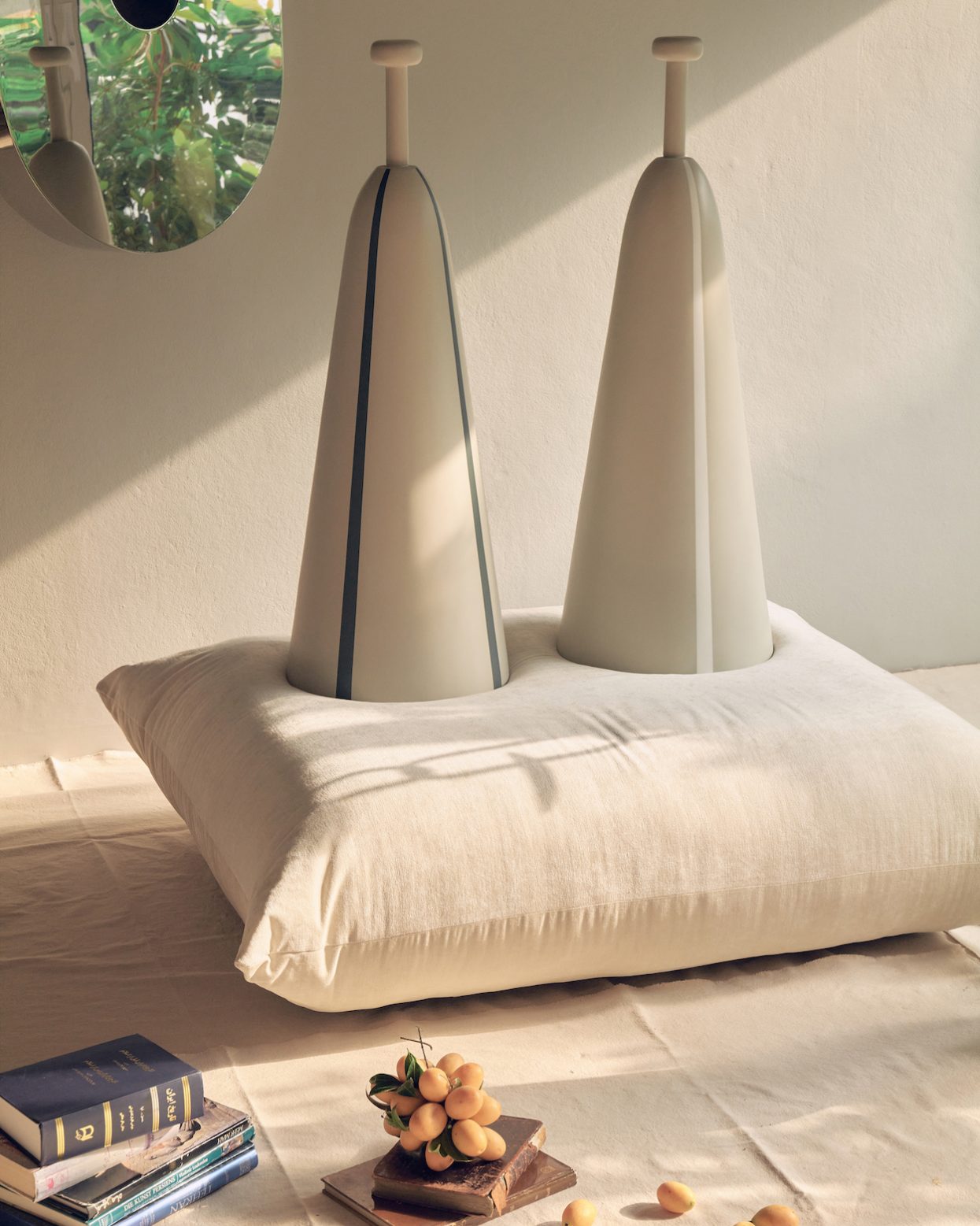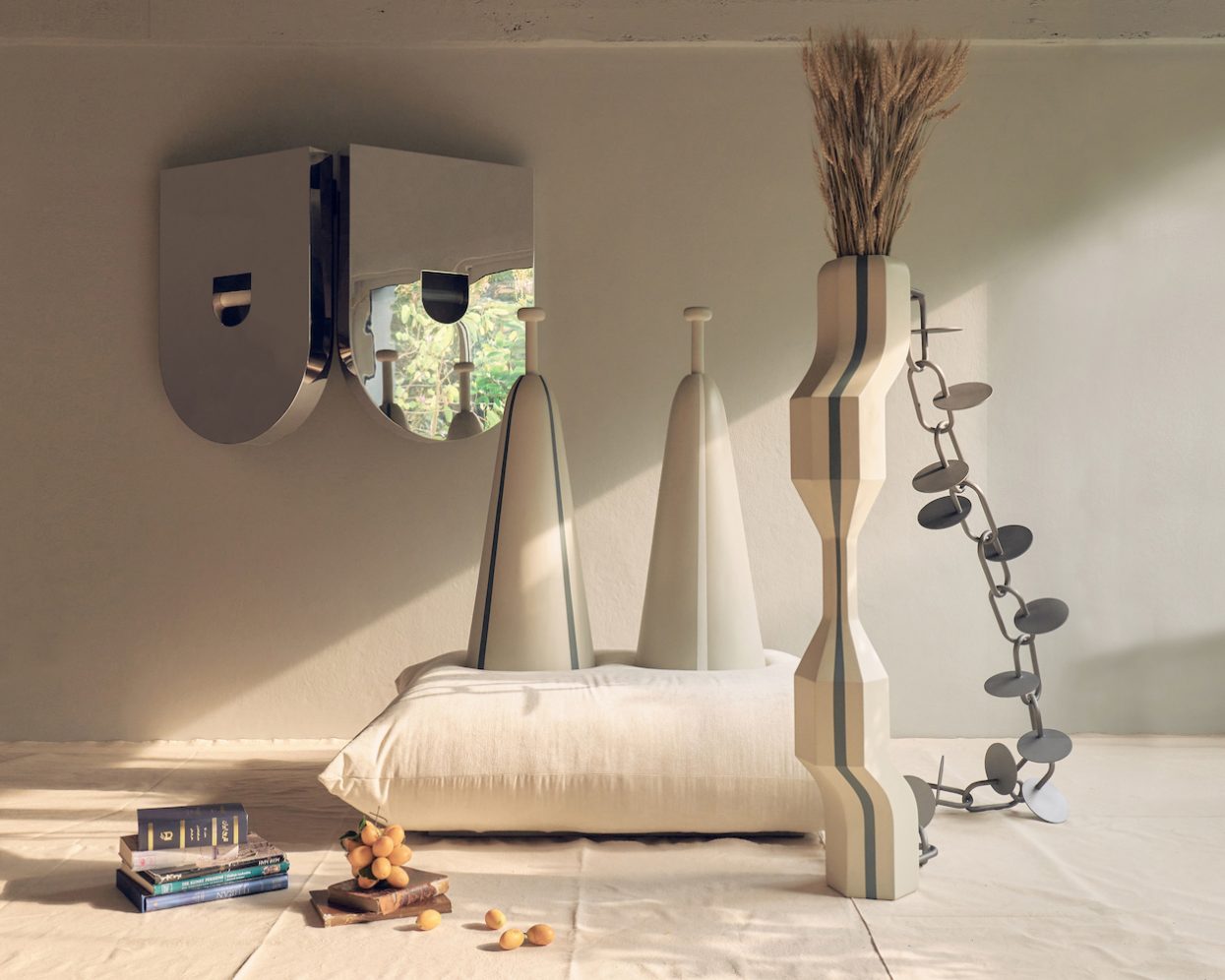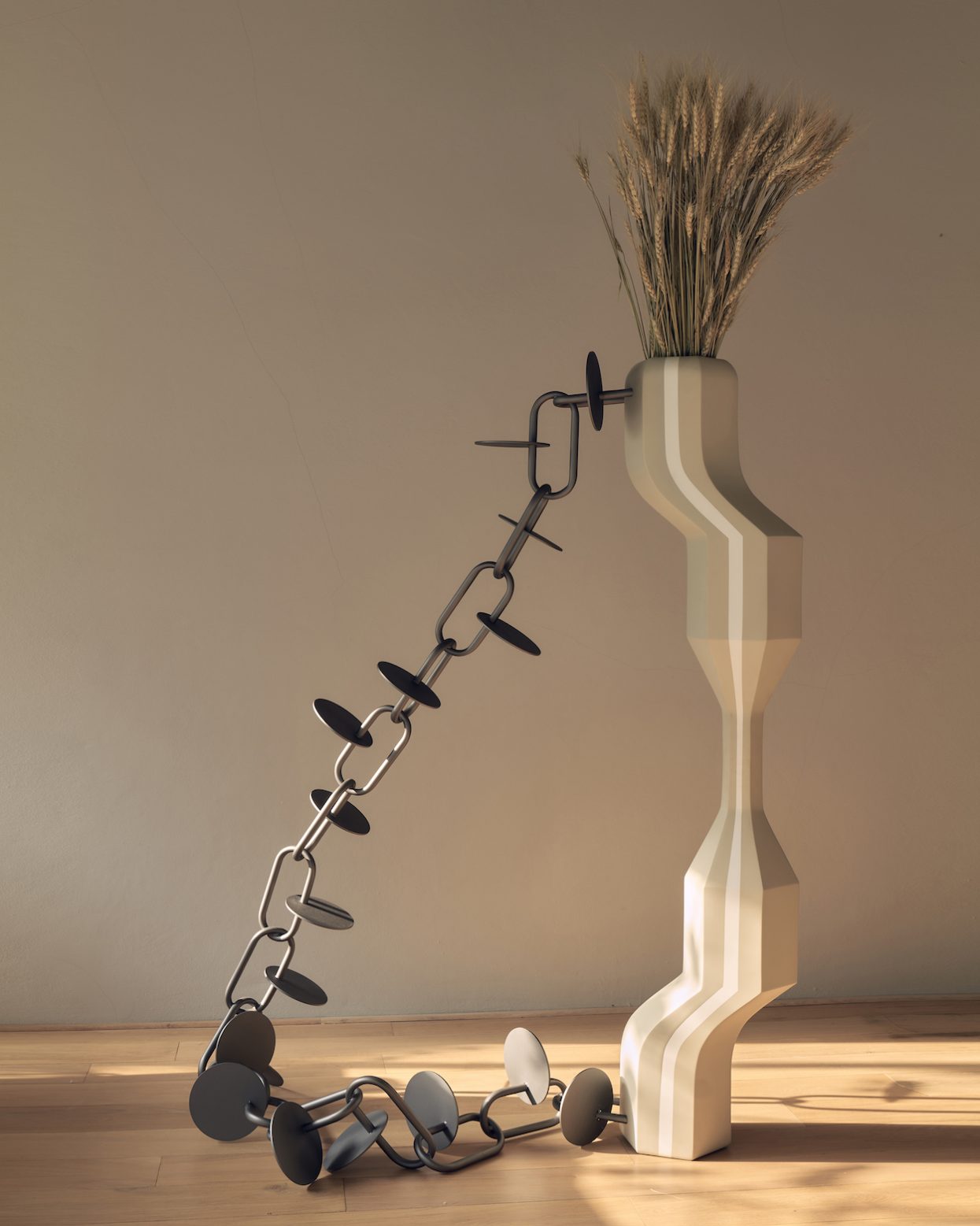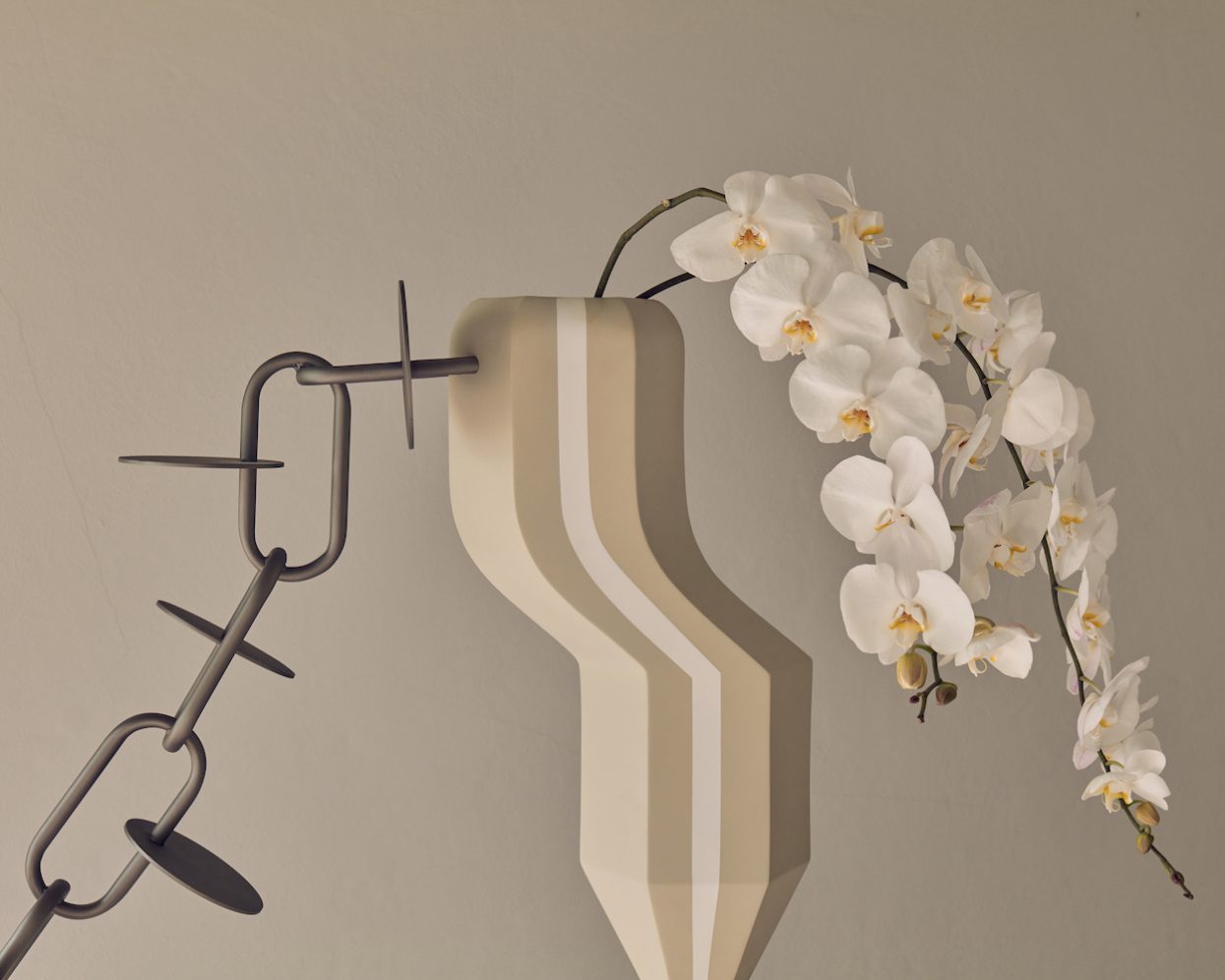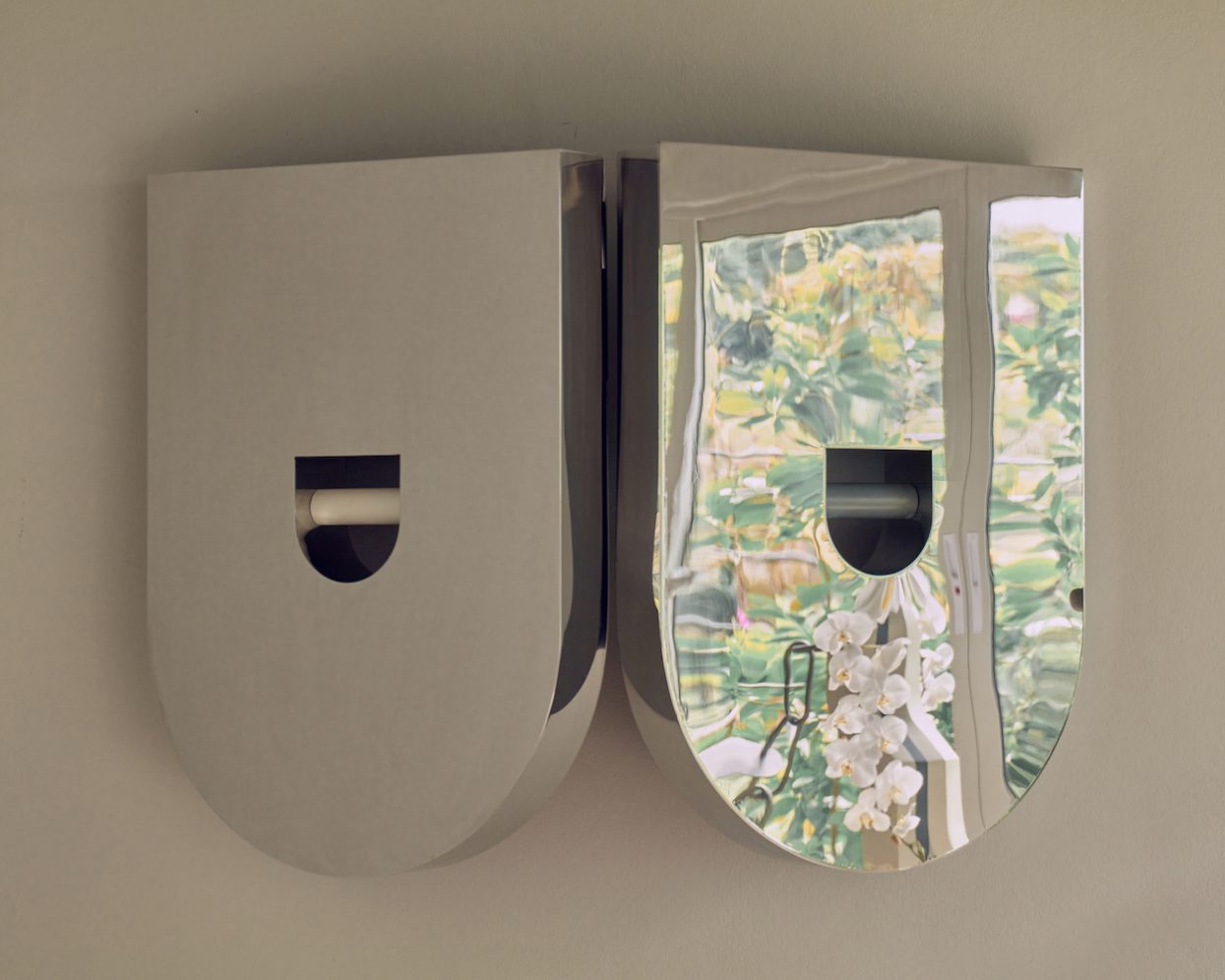Here, we ask designers to take a selfie and give us an inside look at their life.
Age: 31
Occupation: Architect, designer, and artist.
Instagram: @sabayazdjerdi
Hometown: Tehran.
Studio location: San Francisco.
Describe what you make: I design sculptures and furniture to reimagine my personal narrative and celebrate Iran’s rich culture.
The most important thing you’ve designed to date: The Pahlevoon Collection as a whole is so close to my heart. (Pahlevoon means “hero” in Farsi.) Each piece is very visceral and personal—they immediately take me back to my childhood days in my grandfather’s home in Tehran. If I had to choose, the piece “Sang-ru” is probably one of the strongest that I’ve done as it interweaves a layer of human psychology, which I have always been fascinated by.
Sang-ru is my interpretation of a Pahlevan shield as a mirror. It is meant to be installed at the height of the viewer’s face, in order to omit their reflection and force them consider their surroundings first and foremost. It is an interactive design experience that symbolizes selflessness—an honorable Pahlevan attribute.
Describe the problem your work solves: My work explores Iranian identity, and this identity, I feel, is both a blessing and a curse. We are proud of our heritage but undignified by what our country stands for today. One of the main goals in the current battle against this regime is to reclaim the Iranian identity and separate from what they stand for and promote. My work exists to link Iranians back to our culture, our poetry, our values of thousands of years and not to what you see in the media for the past 43 years. With the Pahlevoon Collection, I want to remind the world of some of the cherished values our culture has, which are not represented well now.
The Pahlevoon Collection is inspired by the equipment used in varzesh-e-pahlavani––the sport of heroes. The equipment pieces were used to prepare a man’s body for battle around 1500 years ago, and my goal with this collection was to give them new functions within the home, as if to pacify but also commemorate them, while interpreting them through my lens as a woman. I want my work to equalize the role of men and women as Iraninan heroes.
Describe the project you are working on now: I currently work full-time as an architect at Ryan Leidner Architecture in San Francisco. Outside of this, I am starting to sketch a new collection for 2023 that explores a new part of Iranian culture. My goal is to work with a gallery here on the West Coast or abroad and have them commission/support me to develop a new collection.
A new or forthcoming project we should know about: The latest addition to the Pahlevoon Collection ‘mil-stone’ was launched at Alcova during Milan Design Week in June. I’m currently exploring and sketching my new collection that I’ll release later in 2023.
What you absolutely must have in your studio: My sketch book, computer, nuts, and music. The type of music is mostly based on my mood on that day. My husband and I love Iranian artists and we have a few paintings and sculptures by Sam Samee, Bahareh Navabi, Mohamad Hosein Gholamzadeh, and Kiarash Alimi. These pieces serve as icons within our space.
What you do when you’re not working: These past two weeks I have been constantly checking the news about the Iran protests. But normally I love spending time with my husband, video calling our families in Iran, hiking in the woods, and exploring new parts of San Francisco.
Sources of creative envy: My mom and dad. This isn’t really creative envy—more so inspiration. They both passed away when I was 15. My mom was an architect and my dad taught human behavior and psychology. They inspire me in everything I do. When I first started my studio, I named it “mym,” which was their initials. But then I changed it back to trace it to my name as I hope their legacy directly lives on through me and what I create.
The distraction you want to eliminate: Social media is both the easiest source of news but it also wastes so much of my daily time!
Concrete or marble? Marble.
High-rise or townhouse? Townhouse. I prefer living closer to the surface of the earth.
Remember or forget? Remember.
Aliens or ghosts? Aliens.
Dark or light? Light.
